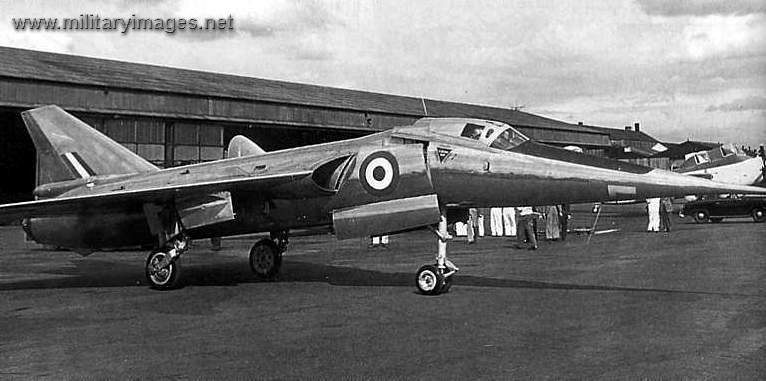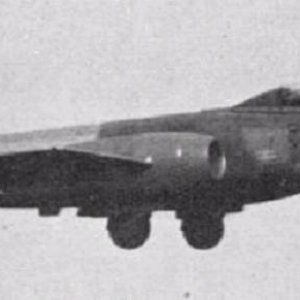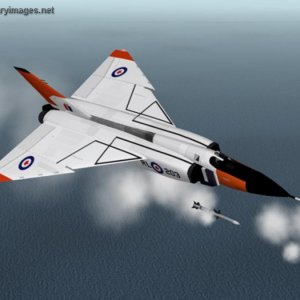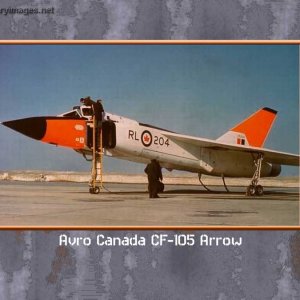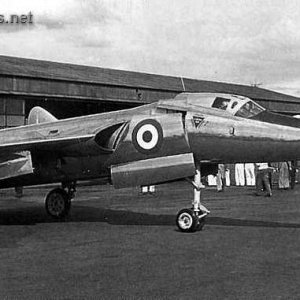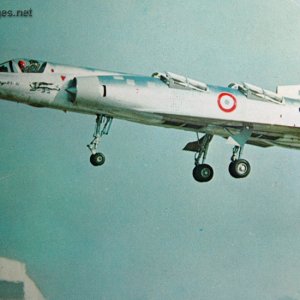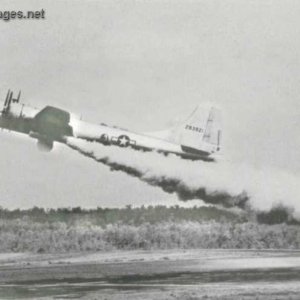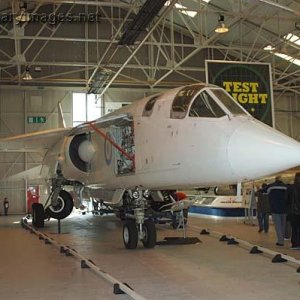The Fairey FD.2 - Transonic Research Aircraft
Sir Henry Gardner, British Director of Scientific Research (Air), suggested Fairey design a transonic research successor to the FD.1 in February 1949. In Oct. 1951 Fairey got a real design boost when Robert Lickey, formerly of Hawker's, joined Fairey as Chief Engineer.
Due to production priorities imposed by the British Government due to the Korean War, the FD.1 design progressed slowly. It was only in Sept. of 1952 that production drawings were issued to the shops. While supposedly designed for transonic research, (since the British Government had become convinced it was too risky to try supersonic flight with human pilots largely due to the crash of the de Havilland DH.108 Swallow), Fairey designed in far more performance potential. The Delta 2 was an excellent and far-sighted design. It was a very sleek thin-wing pure delta design using a single afterburning Rolls-Royce Avon turbojet. To compensate for the high landing angles inherent with delta designs, a "droop snoot" was designed into the aircraft. This was patented and later applied to Concorde. The wing had a very thin thickness-chord ratio of only 4%. It also had excellant control surfaces to assure good manoeuvrability.
The aircraft first flew in Oct 1954, flight testing was slow paced with the first 17 flights being subsonic, the last resulting in a belly landing and 8 months of repairs. This was due to the fuel collector tank being collapsed by an internal build-up of air pressure during flight. In the month of its return to flight status, the FD.2, with Peter Twiss at the helm, went supersonic without afterburner augmentation.
This made it the first aircraft in the world to "supercruise." Once the FD.2 had demonstrated the ability to "supercruise" and based on performance projections, it became quite clear to Peter Twiss and Fairey that the FD.2 could make a serious attempt on the World Absolute Speed Record for piloted aircraft.
Even Roll-Royce, was against the idea warning the engine might disintegrate. Fairey eventually managed to get permission but had to pay for the record attempt out of pocket.
On 10 March 1956, the FD.2, with Peter Twiss at the controls, set the World's first four figure speed record, achieving a mean speed of 1132 mph at 38,000 ft over a 9.65 mile course. The record exceeded by more than 300 mph (37 percent) the previous record set up in August 1955 by an American F-100 Super Sabre. Never before had the record been raised by such a margin.
The effects of this extraordinary performance sent a shock wave round the aviation fraternity in many countries. The aircraft was 51 feet 71/2 inches in length with a 26 feet 10 inch wingspan. The nose was highly pointed and could be "drooped" to give the pilot a better view during landings and take-off. This was the first time this technique had ever been used and was later incorporated in the design of Concorde. Its first supersonic flight took place on 28 October 1955 when it was discovered that the FD.2 could easily exceed Mach 1 without use of reheat.
The following month it reached 1,028 mph at 30,000 feet. That was well above the then current World Speed Record, set by a USAF F-100C, Super Sabre of 822.26 mph. A decision was taken by the test flight team to go for an attempt on the World Record, however the Government was not at all supportive.
Fairey had to rent the FD.2 back from the RAF, hire all the measuring equipment from RAE Farnborough and take out accident insurance for the aircraft. On 10 March 1956 FD.2 WG 774 took off from RAE Boscombe Down with Peter Twiss at the controls and flew a figure of eight course along the South Coast of England. On the sixth circuit the FD.2 reached 1,132 mph, creating the World's first four-figure Air Speed record.
One would think that the British Government would be extremely proud, however the Government scientists refused to believe the figures and only acknowledged the record when it was confirmed by the independent time keepers. Even Rolls-Royce refused to accept that their Avon engine was capable of supersonic flight! Within weeks a ruling was made that no low-level supersonic flights were to be made within UK airspace.
This forced Fairey to re-consider their test programme until the Cazaux airfield near Bordeaux was offered by the French Government. Both French Air Force and Dassault personnel were at the airfield along with the Fairey team. Forty-seven low-level supersonic flights took place over a period of two months.
It was no coincidence that Dassault had their engineers at Cazaux as they, like Fairey, were interested in delta wing fighters and during the FD.2s tests they learnt a lot about the characteristics of supersonic delta wings. Two days after the FD.2 had returned home the first Mirage III prototype was rolled out. Both in size and appearance it was almost a carbon copy of the FD.2. As Marcel Dassault, the founder of the company, said in the book 'Mirage, Warplane of the World', "If it were not for the clumsy way in which you tackle things in Britain, you could have made the Mirage yourselves".
The next series of overseas low-level research flights took place in Norway with observers from the United States in attendance. Remember the Convair Delta Dagger?
The FD.2 was never allowed to be developed into a fighter. The Dassault Mirage went on to become the best-selling fighter aircraft range of all time.





